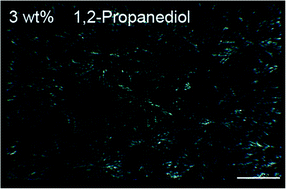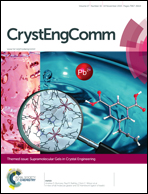12-Hydroxystearic acid SAFiNs in aliphatic diols – a molecular oddity
Abstract
12-Hydroxystearic acid (12-HSA), a structurally simple and cost-effective low molecular weight organogelator, has been studied extensively. It is established that the primary intermolecular interaction for self-assembly of 12-HSA molecular gels is hydrogen bonding and to a lesser extent van der Waals interactions. Due to the solvent-gelator interplay, it is expected that more polar solvents, especially hydrogen-bonding rich solvents are more likely to dissolve 12-HSA preventing gelation or crystallization. Surprisingly, it is found that 12-HSA is able to gelate a series of diols, but not their mono functional alcohols. A potential gelation mechanism is proposed that the diol co-crystallizes between 12-HSA molecules promoting 1-dimensional growth. The gelation behavior, fiber morphology, thermal properties as well as viscolastic properties of the resultant gels are drastically affected by the structure of diol solvents. Solvents shorter in chain length, with –OH groups at each terminal end, tend to form fibrous aggregates with higher gelation capacity, higher melting points and mechanically are stronger. Both increasing the diol chain length and the position of the hydroxyl groups from the primary positions lead to reduced gelation ability. The resultant gels comprised of highly branched, ‘spherulitic-like’ crystals are mechanically weaker with lower melting point.

- This article is part of the themed collection: Supramolecular Gels in Crystal Engineering

 Please wait while we load your content...
Please wait while we load your content...